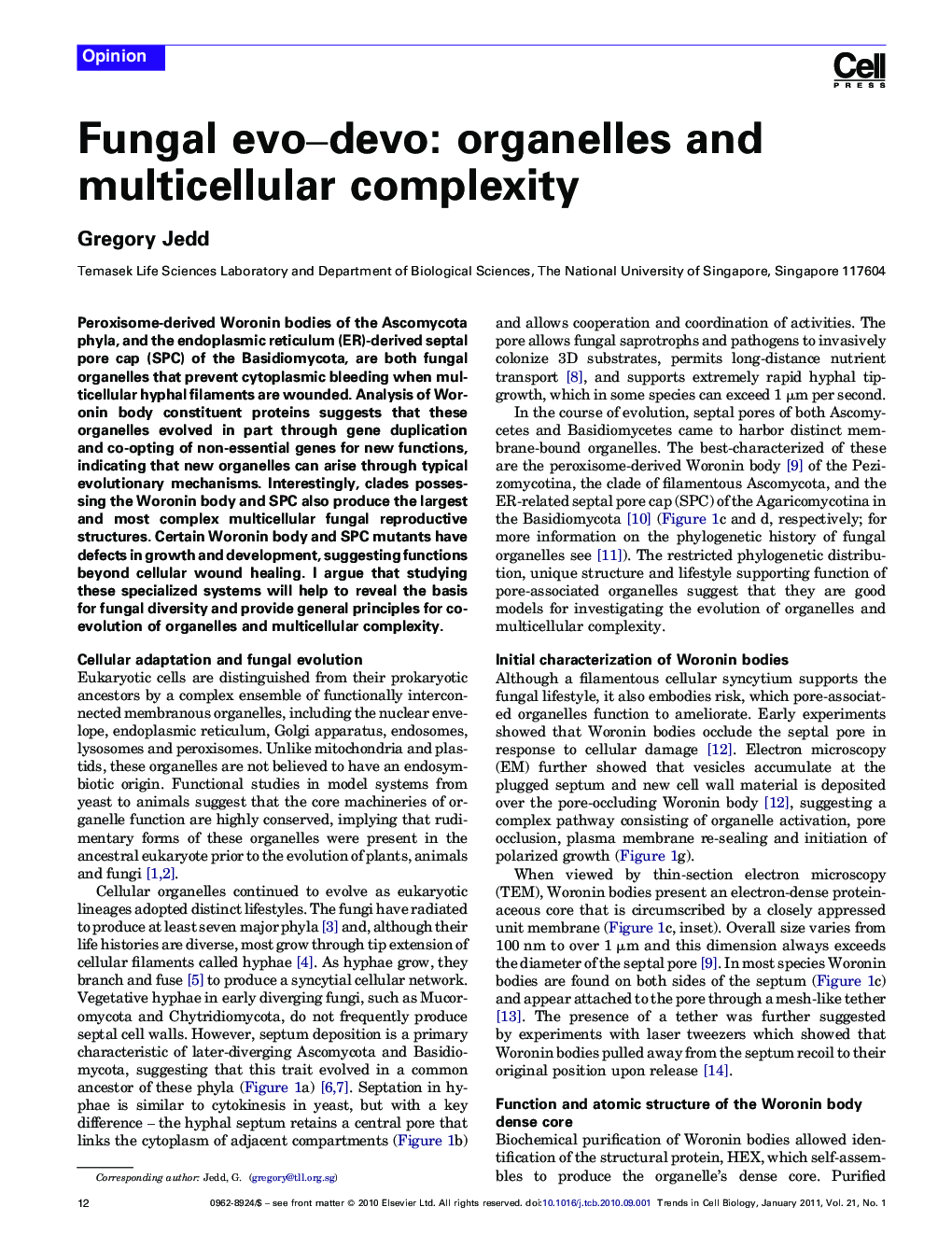| Article ID | Journal | Published Year | Pages | File Type |
|---|---|---|---|---|
| 2204756 | Trends in Cell Biology | 2011 | 8 Pages |
Peroxisome-derived Woronin bodies of the Ascomycota phyla, and the endoplasmic reticulum (ER)-derived septal pore cap (SPC) of the Basidiomycota, are both fungal organelles that prevent cytoplasmic bleeding when multicellular hyphal filaments are wounded. Analysis of Woronin body constituent proteins suggests that these organelles evolved in part through gene duplication and co-opting of non-essential genes for new functions, indicating that new organelles can arise through typical evolutionary mechanisms. Interestingly, clades possessing the Woronin body and SPC also produce the largest and most complex multicellular fungal reproductive structures. Certain Woronin body and SPC mutants have defects in growth and development, suggesting functions beyond cellular wound healing. I argue that studying these specialized systems will help to reveal the basis for fungal diversity and provide general principles for co-evolution of organelles and multicellular complexity.
